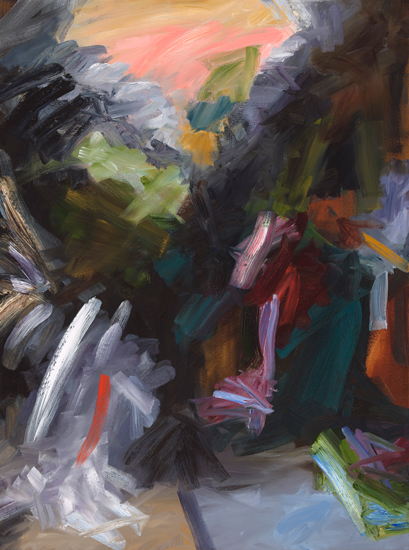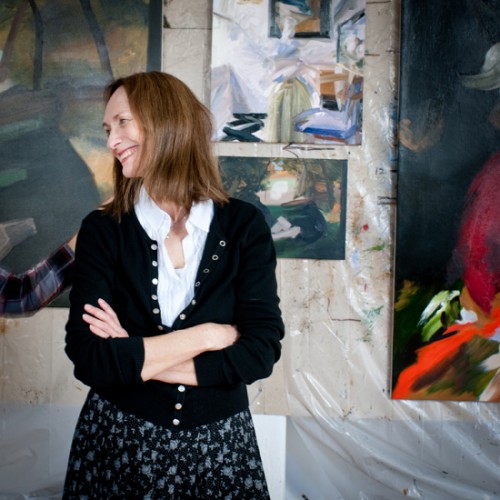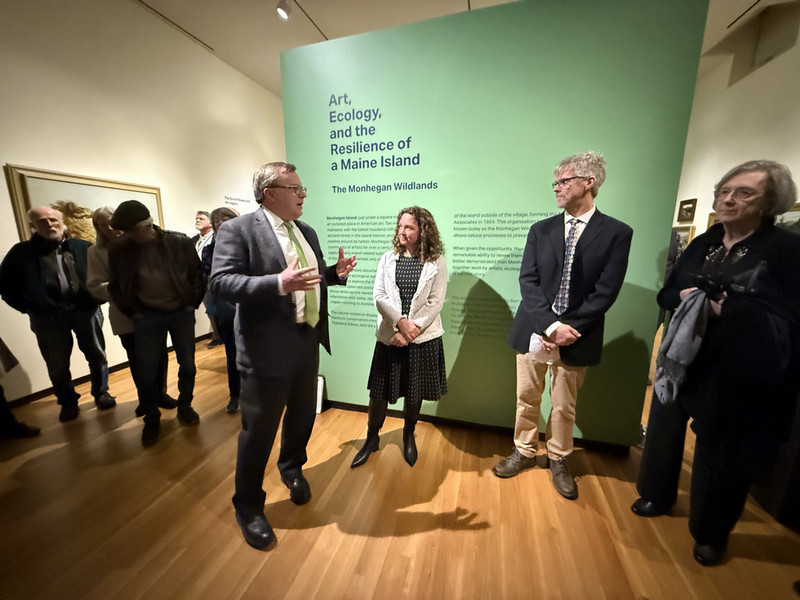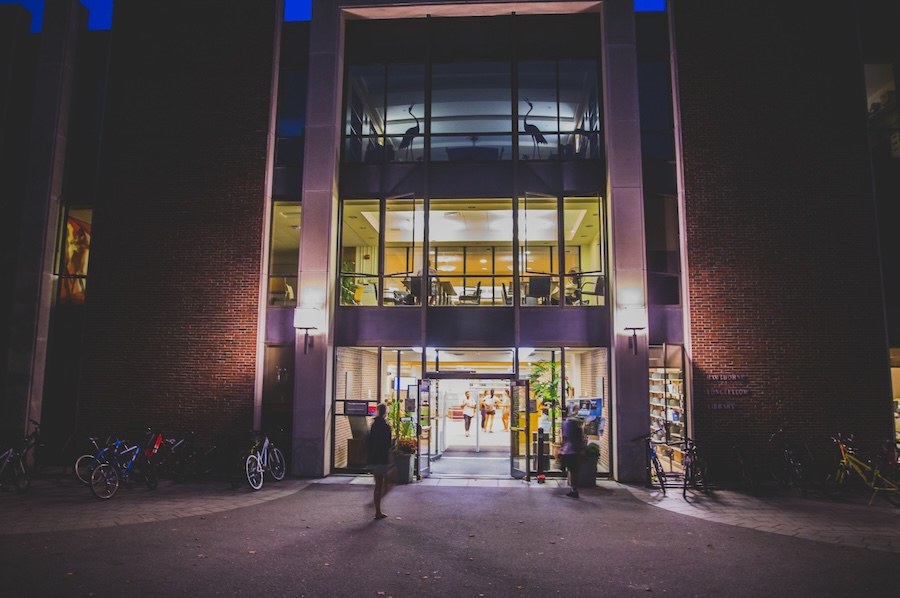Elise Ansel/Denys Calvaert: Contemporary Reflections on a late-Renaissance Painting
By Bowdoin College Museum of Art
This exhibition of new work by Portland-based Elise Ansel is—in the best sense—confrontational. Her series of seven preparatory drawings and an equal number of oil paintings responds to a historic work in Bowdoin’s collection, Denys Calvaert’s Annunciation. When Ansel first encountered this religious scene last fall, which renders the angel Gabriel’s announcement to the Virgin Mary, she was attracted to its brilliant colors and dynamic composition. Spending time with it, she became increasingly aware of the assumptions about gender roles, which infuse this religious painting by a male artist who was steeped in the traditions of a patriarchal society.
How would this scene look like from a contemporary woman’s perspective? Ansel studied Calvaert’s formal choices, such as linear movements, color harmonies, and spatial organization. She then expressed them in abstract works of her own, “reclaiming,” as she explains, “what’s beautiful, while reworking, (translating into a contemporary lexicon) that which is sexist, classist, and racist.” The resulting paintings are meant as homage to Calvaert as much as a counterargument. In the exhibition, visitors are invited to examine Ansel’s new work juxtaposed to Calvaert’s.




